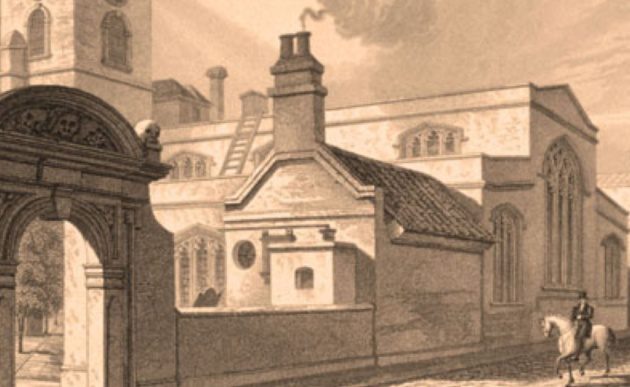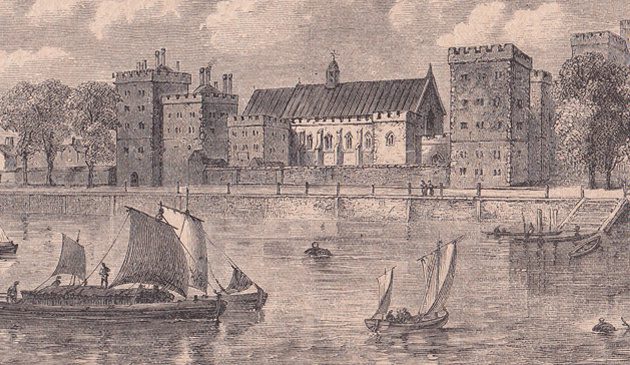The medieval Westminster Abbey

In an attempt to add to the prestige of Westminster Abbey Henry III acquired from the Patriarch of Jerusalem a crystalline reliquary of Christ’s blood, together with a letter of authentication. On St. Edward’s Day 1247 Henry carried the reliquary from St. Paul’s Cathedral to Westminster Abbey, dressed in a humble cloak, and in procession with all the priests of London. The monk Matthew Paris, who witnessed the procession, recorded it in his manuscript Chronica Maiora, a detail of which is shown here.
Construction at Westminster continued section by section, funded by a number of medieval monarchs, particularly Richard II in the 14th century and Henry V in the 15th. Edward III had the bell tower and its bells replaced. Wine flowed from a fountain at its side at coronations and other special occasions. Yet it was in the early 16th century, over 250 years after Henry’s work began, that the abbey was finally completed in the early 16th century, leaving us with essentially the church that remains today.
On the west side of the abbey precinct stood the almonry, or ‘dole-house’, from where dole was distributed and soup served to the poor. The endowment of Eleanor of Castile provided for cash payments for 20,000 people, which must have attracted those from far and wide. As the number of residents living at Westminster grew throughout the Middle Ages the smaller parish church of St. Margaret’s was established by the monastery in the abbey grounds.
The Great Plague, which had started somewhere in Asia and is still the worst pandemic on record, arrived in England during the summer of 1348. Over the following year around half the population of England were to succumb to it, bringing major changes to the economy and society. The community of Westminster were not immune. Abbot Byrcheston and 26 of the monks died and were buried in the South Cloister, where a large black slab commemorates them.
During the Middle Ages Westminster Abbey became one of the greatest monasteries in England and certainly one of the wealthiest. The Abbot was a high-ranking official who played a part in the royal court and politics. Around 40 black-robed Benedictine monks lived and worked within the abbey’s grounds, whose lives were primarily devoted to regular worship through prayer and singing, manual labour and study. Young men from villages on lands owned by the abbey normally attended its Almonry school before joining the monastery as novices at around the age of eighteen. In addition to the monks, around a hundred servants and staff were employed. The monastery, with its pig farm, orchard, vineyard, granary, mill, brew-house, kitchens, and infirmary was largely self-sufficient.
Sources include: John Field ‘Kingdom Power & Glory’; Richard Jenkyns ‘Westminster Abbey’; Edward Walford ‘Old and New London’ (1897); Christopher Brooke ‘London 800-1216: The Shaping of a City’; Thomas Cussans ‘Kings and Queens of the British Isles’.
< Back to The Origins of Westminster Abbey


